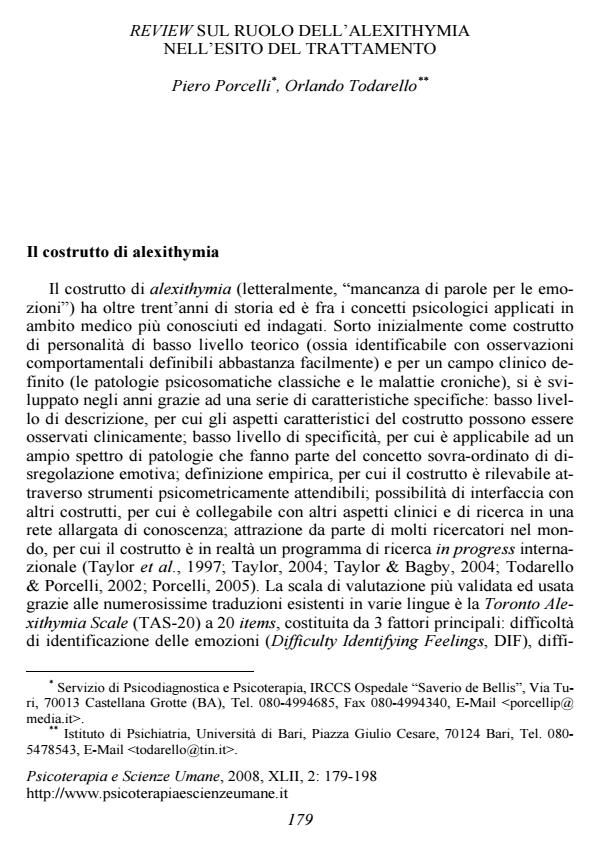Review sul ruolo dell'alexithymia nell'esito del trattamento
Titolo Rivista PSICOTERAPIA E SCIENZE UMANE
Autori/Curatori Piero Porcelli, Orlando Todarello
Anno di pubblicazione 2008 Fascicolo 2008/2 Lingua Italiano
Numero pagine 20 P. 179-198 Dimensione file 172 KB
DOI
Il DOI è il codice a barre della proprietà intellettuale: per saperne di più
clicca qui
Qui sotto puoi vedere in anteprima la prima pagina di questo articolo.
Se questo articolo ti interessa, lo puoi acquistare (e scaricare in formato pdf) seguendo le facili indicazioni per acquistare il download credit. Acquista Download Credits per scaricare questo Articolo in formato PDF

FrancoAngeli è membro della Publishers International Linking Association, Inc (PILA)associazione indipendente e non profit per facilitare (attraverso i servizi tecnologici implementati da CrossRef.org) l’accesso degli studiosi ai contenuti digitali nelle pubblicazioni professionali e scientifiche
Alexithymia and treatment outcome: review on the role of alexithymia The authors examine the role played by alexithymia in the treatment of various medical and psychiatric disorders, and the post-treatment change of alexithymia. Most studies on patients with complicated grief, gastrointestinal somatization, major depression, substance abuse, and surgery have shown that those with higher alexithymia respond less favourably or more slowly to psychotherapeutic interventions, mostly when insight-oriented approaches are used. Only one published study showed a stable reduction over two years of alexithymia levels in patients with coronary heart disease. Clinicians who treat alexithymic patients should expect therefore fewer and slower treatment progress and implement substantial modifications to their psychotherapeutic approaches. [KEY WORDS: affect dysregulation, alexithymia, outcome, psychosomatics, psychotherapy];
Piero Porcelli, Orlando Todarello, Review sul ruolo dell'alexithymia nell'esito del trattamento in "PSICOTERAPIA E SCIENZE UMANE" 2/2008, pp 179-198, DOI: